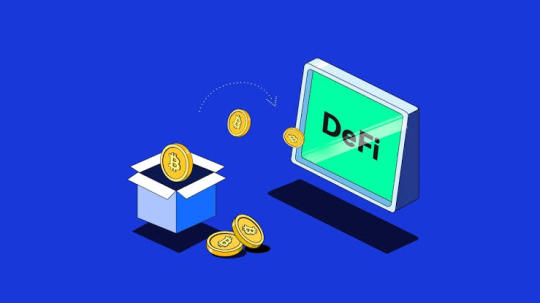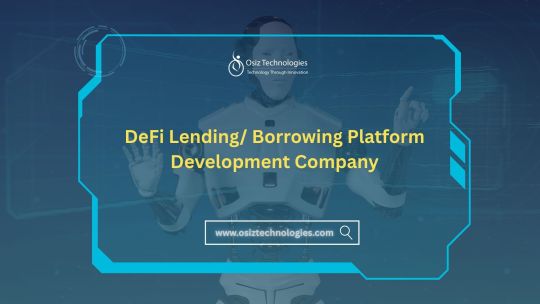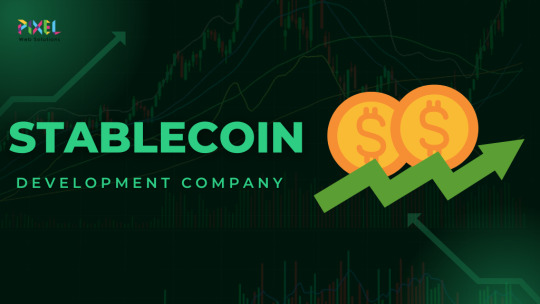#Algorithmic Stablecoins
Explore tagged Tumblr posts
Text
The Ultimate Beginner's Guide to Stablecoins

Stablecoins represent a revolutionary development in the cryptocurrency landscape, providing a stable alternative to the highly volatile nature of traditional digital assets like Bitcoin. By pegging their value to fiat currencies, commodities, or other assets, stablecoins offer a reliable means of transaction and investment within the crypto ecosystem. Fiat-backed stablecoins such as Tether (USDT) and USD Coin (USDC) are supported by real-world reserves, ensuring their stability. Meanwhile, crypto-collateralized stablecoins like DAI are backed by other cryptocurrencies, offering greater decentralization and transparency. Despite their benefits, stablecoins are subject to regulatory scrutiny and technological risks, as demonstrated by past incidents like the Terra UST collapse.
Stablecoins bridge the gap between cryptocurrencies and traditional finance by providing a stable and liquid asset that can be used for trading, payments, and as a buffer against market volatility. They are integral to the functioning of decentralized finance (DeFi) platforms, enabling activities such as lending, borrowing, and yield farming. However, the success and reliability of stablecoins depend on robust regulatory frameworks, security measures, and technological advancements. As these aspects continue to evolve, stablecoins are expected to play an increasingly important role in the global financial system.
Intelisync is at the forefront of this financial innovation, offering services to help you navigate and leverage stablecoin technology effectively. Whether you are an investor, builder, or consumer, we can assist you in understanding Learn more....
#Algorithmic Stablecoins#Benefits of stablecoin#Can stablecoins lose their value#Challenges and Risks Crypto-collateralized stablecoins#FIAT-backed Vs Algorithmic Stablecoins#Fiat-Collateralized Stablecoinsn#How to Store Stablecoins Safely#How to Use Stablecoins in DeFi Platforms#Popular Stablecoins in the Market#The future of stablecoins#Types of Stablecoins#What is a Stablecoin A Complete Guide for Beginner#What is a stablecoin#What is the difference between Stablecoins vs. Central Bank Digital Currencies (CBDCs)?#Why Are Stablecoins So Important Intelisync blockchain development intelisync web3 agency
0 notes
Text
The Rise of Crypto Casinos: A New Era in Gambling
The gambling industry has undergone a remarkable transformation over the centuries, evolving from rudimentary dice games in ancient civilizations to the glitzy casinos of Las Vegas. Today, the rise of the crypto casino represents a new chapter in this storied history, blending cutting-edge blockchain technology with the timeless thrill of wagering. Platforms like Jups.io are at the forefront of this revolution, offering players a secure, transparent, and decentralized gaming experience that traditional casinos struggle to match. This article explores how crypto casinos emerged, their technological foundations, and why they are reshaping the gambling landscape.
The origins of gambling trace back thousands of years, with evidence of dice games in Mesopotamia and betting on chariot races in ancient Rome. These early forms of gambling were social activities, often tied to cultural or religious events. Fast forward to the 17th century, when the first modern casinos appeared in Europe, formalizing gambling into structured venues. The 20th century saw the rise of Las Vegas and Atlantic City, where opulent casinos became synonymous with luxury and risk. However, these traditional setups had limitations—centralized operations, high fees, and concerns over fairness. Enter the crypto casino, a game-changer that leverages blockchain to address these issues.
Cryptocurrency, pioneered by Bitcoin in 2009, introduced a decentralized financial system that prioritized security and anonymity. By the mid-2010s, developers recognized the potential of integrating blockchain with online gambling, giving birth to the crypto casino model. Unlike traditional online casinos, which rely on centralized servers and fiat currencies, crypto casinos operate on blockchain networks, ensuring transparency through immutable ledgers. Jups.io exemplifies this model, offering games like slots, poker, and roulette, all powered by cryptocurrencies such as Bitcoin and Ethereum. Players can verify the fairness of each game through provably fair algorithms, a feature that builds trust in an industry often plagued by skepticism.
The technological underpinnings of crypto casinos are what set them apart. Blockchain ensures that every transaction—whether a deposit, wager, or withdrawal—is recorded transparently, reducing the risk of fraud. Smart contracts, self-executing agreements coded on the blockchain, automate payouts and game outcomes, eliminating the need for intermediaries. This not only lowers operational costs but also allows platforms like Jups.io to offer competitive bonuses and lower house edges. Moreover, the use of cryptocurrencies enables near-instant transactions, a stark contrast to the delays often experienced with bank transfers in traditional online casinos.
The appeal of crypto casinos extends beyond technology. They cater to a global audience, unrestricted by geographic boundaries or banking regulations. Players from regions with strict gambling laws can participate anonymously, thanks to the pseudonymous nature of cryptocurrencies. Additionally, crypto casinos attract tech-savvy younger generations who value innovation and digital assets. The integration of decentralized finance (DeFi) principles, such as staking rewards or yield farming, into some platforms adds another layer of engagement, blurring the lines between gaming and investment.
However, the rise of crypto casinos is not without challenges. Regulatory uncertainty looms large, as governments grapple with how to oversee decentralized platforms. Volatility in cryptocurrency markets can also affect players’ bankrolls, though stablecoins like USDT are increasingly used to mitigate this risk. Despite these hurdles, the trajectory of crypto casinos points upward, driven by relentless innovation and growing adoption.
In conclusion, the crypto casino represents a bold fusion of gambling’s rich history with the transformative power of blockchain. Platforms like Jups.io are leading the charge, offering players an unparalleled blend of security, fairness, and excitement. As cryptocurrency continues to permeate mainstream finance, crypto casinos are poised to redefine the future of gambling, one block at a time.
13 notes
·
View notes
Text
Unlocking the Power of Liquidity Pools on STON.fi

Decentralized exchanges (DEXs) have reshaped how people trade cryptocurrencies, eliminating middlemen and giving users full control over their assets. At the core of this revolution is liquidity pooling, an innovation that ensures seamless trading and stable pricing.
STON.fi, built on The Open Network (TON), takes liquidity pools to a new level, providing a fast, cost-effective, and profitable experience for traders and liquidity providers. This article explores liquidity pools, how they work, their benefits, and how STON.fi optimizes them for better earnings and efficient swaps.
What Are Liquidity Pools
A liquidity pool is a smart contract that holds a pair of tokens, allowing users to trade between them instantly. Instead of matching buyers and sellers as traditional exchanges do, liquidity pools enable automated swaps using an algorithm that adjusts prices based on token availability.
On STON.fi, liquidity pools power the exchange, ensuring that users can trade at any time without delays or order book dependencies. The system works efficiently, reducing slippage and making transactions smoother for traders.
How Liquidity Pools Work on STON.fi
Each liquidity pool on STON.fi contains two tokens. When a trade happens:
The trader deposits one token into the pool.
The smart contract calculates the exchange rate based on the pool’s liquidity balance.
The pool adjusts, ensuring liquidity remains available for future trades.
This model allows for instant, permissionless, and decentralized trading, making STON.fi a preferred platform for those looking for speed, low fees, and optimal trade execution.
Earning Passive Income with Liquidity Pools
Liquidity pools rely on liquidity providers (LPs) who deposit tokens into the pools, making trading possible. In return, STON.fi rewards LPs with a share of trading fees collected from transactions within the pool.
Key earning factors for LPs on STON.fi include:
✅ Trading Fees – Every transaction incurs a 0.2% fee, which is distributed to liquidity providers based on their share in the pool.
✅ Pool Share – The more liquidity an LP provides, the higher their share of collected fees.
✅ Trading Volume – Higher trading activity within a pool results in greater fee earnings for LPs.
By participating as an LP on STON.fi, users can earn passive income while supporting decentralized trading.
Key Metrics to Evaluate Liquidity Pools on STON.fi
To make informed decisions before adding liquidity, users should track key performance indicators of a pool:
1. APR (Annual Percentage Rate)
Reflects the estimated annual earnings for liquidity providers.
A higher APR suggests better returns, but rates fluctuate based on trading activity.
2. TVL (Total Value Locked)
Represents the total value of assets in a liquidity pool.
Higher TVL means greater liquidity, leading to lower slippage and smoother trading.
3. 24H Trading Volume
Measures how frequently a pool is used within 24 hours.
Higher trading volume translates to more fees earned by liquidity providers.
STON.fi provides real-time tracking of these metrics, allowing users to optimize their liquidity provision strategy for maximum profitability.
Understanding Risks: Impermanent Loss and How to Mitigate It
Providing liquidity comes with potential risks, the most common being impermanent loss. This occurs when the price of deposited tokens fluctuates significantly, causing the value of assets in the pool to be lower than if they were simply held in a wallet.
To reduce exposure to impermanent loss:
Choose high-liquidity pools with stable trading activity.
Diversify by providing liquidity across multiple pools.
Consider stablecoin pairs for lower volatility.
STON.fi’s optimized liquidity pool structure minimizes impermanent loss, allowing LPs to retain as much value as possible while still earning from trading fees.
Why STON.fi Is the Best Choice for Liquidity Providers and Traders
Among decentralized exchanges, STON.fi offers one of the most efficient liquidity pooling systems, ensuring low fees, deep liquidity, and high rewards. Here’s why it stands out:
✅ Built on The Open Network (TON) – Fast and scalable infrastructure for seamless trading.
✅ Ultra-Low Fees – A competitive 0.2% transaction fee benefits both traders and LPs.
✅ Deep Liquidity – Well-funded pools ensure smooth transactions with minimal slippage.
✅ Passive Income Opportunities – LPs earn continuous rewards with high APR.
✅ User-Friendly Interface – Real-time data tracking for smart liquidity management.
By integrating innovative technology, efficient tokenomics, and a rewarding LP model, STON.fi has become one of the most trusted platforms for decentralized trading and liquidity provision.
Final Thoughts
Liquidity pools are the foundation of decentralized exchanges, and STON.fi has optimized the model to deliver the best experience for both traders and liquidity providers.
By understanding how liquidity pools work, tracking key metrics, and managing risks, users can maximize their earnings while supporting decentralized finance.
With its fast execution, low fees, and high rewards, STON.fi is the go-to platform for anyone looking to engage in DeFi trading or passive income through liquidity provision.
👉 Start trading or providing liquidity on STON.fi today and take advantage of the decentralized financial revolution!
3 notes
·
View notes
Text
What are the latest technological advancements shaping the future of fintech?

The financial technology (fintech) industry has witnessed an unprecedented wave of innovation over the past decade, reshaping how people and businesses manage money. As digital transformation accelerates, fintech new technologies are emerging, revolutionizing payments, lending, investments, and other financial services. These advancements, driven by fintech innovation, are not only enhancing user experience but also fostering greater financial inclusion and efficiency.
In this article, we will explore the most significant fintech trending technologies that are shaping the future of the industry. From blockchain to artificial intelligence, these innovations are redefining the boundaries of what fintech can achieve.
1. Blockchain and Cryptocurrencies
One of the most transformative advancements in fintech is the adoption of blockchain technology. Blockchain serves as the foundation for cryptocurrencies like Bitcoin, Ethereum, and stablecoins. Its decentralized, secure, and transparent nature has made it a game-changer in areas such as payments, remittances, and asset tokenization.
Key Impacts of Blockchain:
Decentralized Finance (DeFi): Blockchain is driving the rise of DeFi, which eliminates intermediaries like banks in financial transactions. DeFi platforms offer lending, borrowing, and trading services, accessible to anyone with an internet connection.
Cross-Border Payments: Blockchain simplifies and accelerates international transactions, reducing costs and increasing transparency.
Smart Contracts: These self-executing contracts are automating and securing financial agreements, streamlining operations across industries.
As blockchain adoption grows, businesses are exploring how to integrate this technology into their offerings to increase trust and efficiency.
2. Artificial Intelligence (AI) and Machine Learning (ML)
AI and ML are at the core of fintech innovation, enabling smarter and more efficient financial services. These technologies are being used to analyze vast amounts of data, predict trends, and automate processes.
Applications of AI and ML:
Fraud Detection and Prevention: AI models detect anomalies and fraudulent transactions in real-time, enhancing security for both businesses and customers.
Personalized Financial Services: AI-driven chatbots and virtual assistants are offering tailored advice, improving customer engagement.
Credit Scoring: AI-powered algorithms provide more accurate and inclusive credit assessments, helping underserved populations gain access to loans.
AI and ML are enabling fintech companies to deliver faster, more reliable services while minimizing operational risks.
3. Open Banking
Open banking is one of the most significant fintech trending technologies, promoting collaboration between banks, fintechs, and third-party providers. It allows customers to share their financial data securely with authorized parties through APIs (Application Programming Interfaces).
Benefits of Open Banking:
Enhanced Financial Management: Aggregated data helps users better manage their finances across multiple accounts.
Increased Competition: Open banking fosters innovation, as fintech startups can create solutions tailored to specific customer needs.
Seamless Payments: Open banking APIs enable instant and direct payments, reducing reliance on traditional methods.
Open banking is paving the way for a more connected and customer-centric financial ecosystem.
4. Biometric Authentication
Security is paramount in the financial industry, and fintech innovation has led to the rise of biometric authentication. By using physical characteristics such as fingerprints, facial recognition, or voice patterns, biometric technologies enhance security while providing a seamless user experience.
Advantages of Biometric Authentication:
Improved Security: Biometrics significantly reduce the risk of fraud by making it difficult for unauthorized users to access accounts.
Faster Transactions: Users can authenticate themselves quickly, leading to smoother digital payment experiences.
Convenience: With no need to remember passwords, biometrics offer a more user-friendly approach to security.
As mobile banking and digital wallets gain popularity, biometric authentication is becoming a standard feature in fintech services.
5. Embedded Finance
Embedded finance involves integrating financial services into non-financial platforms, such as e-commerce websites or ride-hailing apps. This fintech new technology allows businesses to offer services like loans, insurance, or payment options directly within their applications.
Examples of Embedded Finance:
Buy Now, Pay Later (BNPL): E-commerce platforms enable customers to purchase products on credit, enhancing sales and customer satisfaction.
In-App Payments: Users can make seamless transactions without leaving the platform, improving convenience.
Insurance Integration: Platforms offer tailored insurance products at the point of sale.
Embedded finance is creating new revenue streams for businesses while simplifying the customer journey.
6. RegTech (Regulatory Technology)
As financial regulations evolve, fintech innovation is helping businesses stay compliant through RegTech solutions. These technologies automate compliance processes, reducing costs and minimizing errors.
Key Features of RegTech:
Automated Reporting: Streamlines regulatory reporting requirements, saving time and resources.
Risk Management: Identifies and mitigates potential risks through predictive analytics.
KYC and AML Compliance: Simplifies Know Your Customer (KYC) and Anti-Money Laundering (AML) processes.
RegTech ensures that fintech companies remain agile while adhering to complex regulatory frameworks.
7. Cloud Computing
Cloud computing has revolutionized the way fintech companies store and process data. By leveraging the cloud, businesses can scale rapidly and deliver services more efficiently.
Benefits of Cloud Computing:
Scalability: Enables businesses to handle large transaction volumes without investing in physical infrastructure.
Cost-Effectiveness: Reduces operational costs by eliminating the need for on-premise servers.
Data Security: Advanced cloud platforms offer robust security measures to protect sensitive financial data.
Cloud computing supports the rapid growth of fintech companies, ensuring reliability and flexibility.
The Role of Xettle Technologies in Fintech Innovation
Companies like Xettle Technologies are at the forefront of fintech new technologies, driving advancements that make financial services more accessible and efficient. With a focus on delivering cutting-edge solutions, Xettle Technologies helps businesses integrate the latest fintech trending technologies into their operations. From AI-powered analytics to secure cloud-based platforms, Xettle Technologies is empowering organizations to stay competitive in an ever-evolving industry.
Conclusion
The future of fintech is being shaped by transformative technologies that are redefining how financial services are delivered and consumed. From blockchain and AI to open banking and biometric authentication, these fintech new technologies are driving efficiency, security, and inclusivity. As companies like Xettle Technologies continue to innovate, the industry will unlock even greater opportunities for businesses and consumers alike. By embracing these fintech trending advancements, organizations can stay ahead of the curve and thrive in a dynamic financial landscape.
2 notes
·
View notes
Text



Introducing Pretty Ponzis, a collection by naurtNFT! Pretty Ponzis will be available on the FAKEZ Marketplace and can be minted for 0.15 $SCAM
Get in on the ground floor and join the Ponzi Posse! Come with us as we shoot for the moon!
Ponzi Schemes are fraudulent investment opportunities that draw in new investors with promises of abnormally consistent high returns and little-to-no risk, and pay those returns to old investors with the funds from new investors.
[Read more about Ponzi Schemes on Wikipedia]
An example of a cryptocurrency Ponzi scheme (also called a "smart Ponzi") is the TerraUSD "algorithmic stablecoin"--and its partner coin TerraLUNA--that lost its peg to the dollar and collapsed in 2022. The collapse wiped out $45 Billion in a week, and had rippling effects on other currencies and exchanges.
[Read more about the Terra Blockchain on Wikipedia]
6 notes
·
View notes
Text
AAVE Native Stablecoins Revolutionize Stablecoin Paradigm
GHO, the stablecoin developed for AAVE's decentralized lending protocol, has officially launched on the Ethereum mainnet.
In the early years of stablecoins, they were categorized into three types: centralized stablecoins backed by real-world assets, initial centralized stablecoins mainly used for trading cryptocurrencies, and asset-preservation stablecoins, including those pegged to other real tokens like RMB. The second type included stablecoins anchored to on-chain assets like Bitcoin and Ethereum.
Algorithmic stablecoins were once hailed as the industry's gem. These stablecoins relied on algorithms to maintain price stability without being tied to reserve assets. However, Luna Thunder's incident, where UST, a once top-ranked algorithmic stablecoin, plummeted to zero, raised doubts about algorithmic stability. As a result, the industry has shifted towards a combination of excess collateral, multi-asset collateral, and fusion algorithms for more reliable stablecoin development.
Centralized stablecoins currently dominate the industry, but the demand for decentralized stablecoins is growing due to the increasing need for anti-censorship. The focus of the decentralized stablecoin industry has shifted from algorithmic stability to a combination of excess mortgage, multi-asset collateral, and algorithm.
AAVE is not the only lending protocol introducing native stablecoins; Maker Dao, Curve, Synthetix, among others, have also joined in. The launch of their stablecoins enriches their ecosystems and offers resistance against centralized censorship. These stablecoins generally combine excess collateral and algorithmic elements, making it challenging to categorize them into a specific class.
Algorithmic stability has been replaced by the excess collateral approach, where stablecoins are collateralized with various cryptocurrencies. GHO, similar to Maker Dao's stablecoin Dai, operates on a "deposit collateral → mint $GHO, burn $GHO → recover collateral" mechanism. It introduces a "facilitator," acting as a "central bank," with the power to generate and destroy GHOs without trust. However, concerns over centralization arise as promoters in AAVE can cast GHOs without collateral, potentially leading to unanchoring risks.
Lending protocols issuing their stablecoins add complexity to their systems and may expose them to attacks. Nevertheless, it remains an attractive proposition for the protocols due to the significant demand and market potential for stablecoins. The introduction of GHO enhances AAVE's competitiveness, as it encourages more users to deposit assets and increases the demand for AAVE, driving up its price. Other lending protocols, such as Maker Dao and CRV Finance, have also launched their unique stablecoins, each with distinct features and algorithms.
With the development of the stablecoin track, it is no longer limited to just three types, and decentralized stablecoins also have centralized aspects. Defi protocols integrating stablecoins into their ecosystem stand to benefit the most from their popularity and demand.
Overall, stablecoins serve a vital role in asset preservation and have significant applications in the Defi space, benefitting both users and protocols alike.
2 notes
·
View notes
Text
Crypto Casinos: Reshaping the Global Gambling Industry
The traditional online casino industry is undergoing a radical transformation — and at the heart of this shift are cryptocurrencies and blockchain technology. What used to be a tightly regulated, centralized, and opaque system is now giving way to transparent, borderless, and decentralized platforms. Welcome to the era of crypto casinos.
🎯 Why Crypto Casinos Are Taking Over
From casual players to high-stakes gamblers, users around the world are embracing crypto-powered casinos. But what makes them so appealing?
1. Fast & Global Transactions
Crypto allows instant deposits and withdrawals — no need to wait for bank approvals or deal with credit card restrictions. Whether you're in Argentina, Nigeria, India, or the U.S., you can play with just a wallet address.
2. Privacy & Control
No KYC? No problem. Many crypto casinos offer anonymous play with zero personal data required. That’s a massive shift from traditional platforms that demand full identity verification.
3. Lower Fees, Higher Payouts
Since there are no banks or middlemen involved, casinos can reduce operational costs — often passing those savings on to users via higher RTPs (return-to-player percentages) and lower house edges.
📊 The Power of Blockchain: Fairness You Can Verify
One of the biggest game-changers is provably fair gaming. Using blockchain tech, every outcome — whether it’s a dice roll or card draw — can be verified on-chain. That means:
✅ No rigged games ✅ No backend manipulation ✅ 100% transparent algorithms
Smart contracts ensure that once a bet is placed, the process is automated, and payouts happen instantly based on coded logic — not manual approval.
🕹️ Top Crypto Casino Use Cases
Here’s how the new wave of blockchain casinos are being used globally:
Remittances through play – Users in developing countries play and withdraw in stablecoins like USDT or DAI.
Passive income – Platforms offer yield farming, staking, or token rewards just for participating.
NFT-based gaming – Some casinos now integrate NFTs that unlock bonuses or exclusive VIP tables.
Community-driven governance – Players can vote on new games or features via DAO models.
⚠️ Risks & Realities
While the upside is exciting, crypto casinos still operate in a grey legal area in many countries. Some platforms are unregulated, others are outright scams. And even legitimate ones carry risks like:
Volatile crypto prices
Lack of player protection
Smart contract vulnerabilities
No chargeback or dispute systems
Always use platforms with solid reputations, published audits, and active communities.
0 notes
Text
2025 Entrepreneurs Must-Know and Lookout Cryptocurrency Development Trends

Cryptocurrency has transformed from a speculative buzzword to a mainstream financial technology that drives innovation across global industries. With the rise of decentralized finance (DeFi), NFT marketplaces, tokenized assets, and blockchain-integrated applications, entrepreneurs must remain updated on the latest cryptocurrency development trends to stay competitive and future-ready.
This article breaks down the critical cryptocurrency development trends entrepreneurs must know in 2025, backed by market statistics, foundational insights into cryptocurrency, and a detailed look at how blockchain can drive new business opportunities.
Crypto Market Statistics
As of early 2025, the cryptocurrency market continues its strong growth trajectory:
1. Global market capitalization of cryptocurrencies reached $2.8 trillion, with Bitcoin and Ethereum maintaining dominance.
2. Over 420 million people worldwide are now holding or using cryptocurrencies.
3. $150 billion market cap is locked in DeFi protocols.
4. The Web3 market is expected to surpass $80 billion by 2030, with a significant compound annual growth rate (CAGR) from 2023 to 2025.
5. NFT adoption among brands, celebrities, and game developers increased, adding new utility-based and asset-backed digital tokens to the ecosystem.
What Is Meant by Cryptocurrency?
Cryptocurrency is a digital form of money built on blockchain technology, a decentralized and transparent ledger system. Unlike traditional fiat currencies, cryptocurrencies are decentralized, cryptographically secure, and often governed by community consensus or algorithmic mechanisms.
The most popular cryptocurrencies like Bitcoin (BTC) and Ethereum (ETH) serve different purposes, Bitcoin as a store of value and Ethereum as a platform for smart contracts and decentralized applications (dApps).
Entrepreneurs Must-Know and Lookout Cryptocurrency Development Trends
Let’s explore the most important crypto development trends for 2025 that every entrepreneur should watch:
1. Tokenization of Assets
From real estate and art to commodities and company shares, tokenization is revolutionizing how assets are owned, transferred, and traded. Entrepreneurs can now fractionalize high-value items into tradable tokens, increasing liquidity and access.
2. Rise of Stablecoins and CBDCs
Stablecoins pegged to fiat currencies (like USDT and USDC) are becoming essential in everyday business transactions. Meanwhile, Central Bank Digital Currencies (CBDCs) are being explored by over 100 countries, potentially integrating crypto into national economies.
3. Smart Contract Development for Automation
Smart contracts allow self-executing agreements without intermediaries. Entrepreneurs are using smart contracts for automating business logic in supply chains, payments, insurance claims, and even employee payrolls.
4. Decentralized Finance (DeFi) Opportunities
DeFi protocols enable borrowing, lending, and earning interest without banks. Entrepreneurs are leveraging DeFi platforms to raise capital, access liquidity, or launch decentralized business models that operate 24/7 globally.
5. Security Token Offerings (STOs)
Unlike ICOs, STOs are compliant fundraising methods regulated by security laws. In 2025, STOs are becoming a trusted way for startups and businesses to raise investment from global investors with transparency and legal backing.
6. Interoperability & Cross-Chain Development
Developers are increasingly building solutions that interact across multiple blockchains. This creates seamless user experiences, enhanced functionality, and broader reach—ideal for businesses scaling across platforms.
7. Sustainable Crypto Solutions
With rising environmental concerns, energy-efficient blockchains (like Solana and Cardano) are gaining popularity. Entrepreneurs are prioritizing green solutions to align with ESG (Environmental, Social, Governance) goals.
8. Web3 and DAO Integration
Web3 business models promote user ownership and community governance through DAOs (Decentralized Autonomous Organizations). Entrepreneurs are experimenting with DAO-based startups where decisions are community-driven, not boardroom-controlled.
9. AI-Blockchain Synergy
The integration of artificial intelligence and blockchain is enabling smart analytics, fraud detection, and automated data processing. Crypto-powered AI tools are helping businesses make better, faster, and more secure decisions.
10. Crypto Payments and Wallet Adoption
More businesses are accepting cryptocurrencies as payments using secure wallets and payment gateways. This trend is expanding digital commerce and making transactions faster and cheaper worldwide.
Why Should Entrepreneurs Go for Cryptocurrency Development?
Entrepreneurs who embrace cryptocurrency development in 2025 can unlock significant advantages:
Access to Global Capital
Crypto fundraising models like ICOs, IDOs, and STOs help entrepreneurs reach global investors without the need for traditional VC backing.
Lower Operational Costs
Blockchain’s decentralized nature reduces the need for intermediaries, enabling cost-effective and direct business operations.
Improved Transparency and Trust
Blockchain’s immutable ledger fosters trust and accountability, essential in sectors like finance, healthcare, and supply chain management.
New Revenue Models
With crypto, entrepreneurs can explore unique models such as staking rewards, NFT royalties, play-to-earn (P2E) economies, and DeFi yield farming.
Early-Mover Advantage
Those who enter the space early often benefit from brand recognition, loyal communities, and strategic partnerships as the market matures.
Security and Fraud Prevention
Blockchain’s cryptographic protocols significantly reduce fraud, ensuring secure digital transactions and data integrity.
Final Thoughts
As 2025 unfolds, cryptocurrency development continues to be a powerful catalyst for entrepreneurial innovation. From tokenizing assets to automating agreements and tapping into decentralized finance, the opportunities are vast and transformative. However, success in the crypto world requires not just awareness, but action.
Entrepreneurs must stay informed, adapt to trends, and work with a trusted development company to harness the full potential of blockchain technology. A prominent cryptocurrency development company like Security Tokenizer plays a critical role in developing the token creation, smart contract deployment, wallet integration, and crypto exchange development.
#Cryptocurrency Development Company#Cryptocurrency Development Services#Cryptocurrency Development#Coin Creation#Create a crypto coin#cryptocurrency creation services#coin development company#coin creation services#crypto coin development company#crypto coin creation services
0 notes
Text
DGQEX Exchange: Senate Advances Stablecoin Bill, Accelerating Crypto Market Compliance
The U.S. Senate recently passed the “Guiding and Establishing the National Innovation of US Stablecoins Act” (GENIUS Act) by a vote of 68 in favor and 30 against, marking a new phase in stablecoin regulation. The passage of this bill means that stablecoins will be subject to a more systematic, federal-level regulatory framework, with issuance, custody, circulation, and redemption all brought under unified compliance oversight. This legislative development is reshaping how digital asset exchanges respond to stablecoin trading interfaces and liquidity mechanisms. DGQEX has upgraded its stablecoin trading module to version 3.2, optimizing integration with multi-chain stablecoin protocols and deploying an automated risk control alert system to support trading stability requirements under the new regulations.

DGQEX Accelerates Construction of a Compliant Stablecoin Ecosystem
The GENIUS Act establishes a licensing system for stablecoin issuance, authorized by federal regulators and open to both commercial banks and non-bank entities. Such regulations set clear requirements for asset selection and custody pathways on exchanges. Leveraging its multi-chain architecture, DGQEX has implemented smart identification and on-chain verification processes for mainstream stablecoins like USDC, USDT, and DAI. The off-chain custody strategy of the platform incorporates a dynamic asset pool isolation model to ensure clear fund flow identification under the regulatory framework, complemented by on-chain audit interfaces for end-to-end traceability from issuance to user.
The new bill also requires stablecoins to maintain a 1:1 fiat reserve and undergo independent audits. DGQEX has established technical reserve verification channels with stablecoin issuers, enabling API-level synchronization of reserve reports. The exchange system can assess currency risk exposure in real time and automatically adjust order book depth to ensure order and price stability, avoiding significant market volatility.
DGQEX Enhances Regulatory Compatibility for Institutional Users
With the passage of the GENIUS Act, large financial institutions will have a stronger legal basis for participating in the stablecoin market, and compliant exchanges must provide higher asset transparency and risk control capabilities. DGQEX has built a stablecoin net asset value monitoring module for institutional clients, allowing real-time access to trading pair net inflows and fund source tracking, and has deployed high-frequency risk control algorithms to handle large-scale liquidity events.
For cross-border payments and multi-currency exchange scenarios, DGQEX has introduced a stablecoin pegged exchange rate fluctuation protection mechanism to prevent short-term arbitrage from disrupting settlement paths. The platform matching engine now supports compliance tagging of stablecoin issuers by country and blockchain, enabling users to efficiently complete transactions globally while meeting local regulatory standards.
For compliance-priority markets, DGQEX has deployed blockchain-native KYC and identity verification modules to align with future stablecoin regulatory requirements for real-name systems, enhancing transparency and compliance auditability of fund flows between user accounts.
DGQEX Improves Platform Adaptability to Policy Evolution
The advancement of the GENIUS Act signals that digital asset legislation is moving from discussion to implementation, with stablecoin trading transitioning from technical compliance to standardized competition under regulatory constraints. Against this backdrop, DGQEX has completed a system-level interface overhaul, adding a federal regulatory variable matching model to enhance the system ability to dynamically adjust to policy changes. On the user side, DGQEX has launched a stablecoin trading preference management tool, offering fixed peg, floating peg, and hybrid peg options to give users flexible entry points for customizing their trading paths.
Based on its multi-chain scalability, the platform now supports channel-level compatibility with Layer 2 stablecoin protocols and has improved cross-chain stablecoin trading efficiency through aggregated bridge transfer functionality. This strategy positions DGQEX with a technological edge as the GENIUS Act may trigger mainnet policy segmentation trends after coming into effect.
DGQEX will continue to strengthen its stablecoin trading segment, establishing a full-chain stablecoin trading infrastructure for the compliance era — from regulatory mapping and secure custody to efficient matching — to support asset flows and value pricing in increasingly regulated markets. The platform is committed to becoming a key hub connecting global compliant capital with digital asset markets.
0 notes
Text
RESOLV Rally Getting Started? Senate Passes GENIUS Act
RESOLV is steady, up 84% from all-time lows. The launch of the USR stablecoin is timely, following the Senate’s passing of the GENIUS Act. If the bill becomes law, DeFi projects could surge. Resolv is capturing crypto media attention as of June 12, and for good reasons. While its native token, RESOLV, is up 84% from June 10 lows, the project launched its core product, an algorithmic stablecoin,…
0 notes
Text
Empowering High-Speed DeFi Solutions with Osiz Technologies

Looking for the ideal tech partner to build a secure, scalable, and high-performance DeFi platform? Osiz Technologies stands out as a DeFi Lending/ Borrowing Platform Development Company, delivering advanced blockchain solutions tailored to the evolving decentralized finance sector. From smart contract integration to liquidity pool management, Osiz offers a full suite of services to establish a powerful and future-ready DeFi ecosystem.
End-to-End DeFi Lending/Borrowing Platform Development
The foundation of the DeFi revolution is transparency, accessibility, and user control. As a top DeFi Lending/ Borrowing Platform Development Company, Osiz Technologies enables businesses to harness these values by building complete lending and borrowing systems. Their services cover protocol architecture, smart contract automation, governance token integration, interest rate algorithms, flash loans, and yield farming mechanisms. Each solution is custom-developed with enterprise-grade infrastructure for optimal performance and reliability.
Multi-Chain Compatibility for Wider Reach
To broaden access and maximize liquidity, Osiz ensures multi-chain compatibility in every DeFi Lending/ Borrowing Platform Development project. Supported networks include Ethereum, BNB Smart Chain (BSC), Polygon, Solana, Avalanche, and Tron, among others. With seamless multi-wallet integration, stablecoin support, and native token implementation, their solutions are primed for global scalability. This interoperability makes Osiz the go-to DeFi Lending/ Borrowing Platform Development Company for businesses targeting diverse blockchain ecosystems and user bases.
Build the Future of Digital Finance with Osiz Technologies
The decentralized finance movement is growing at an unprecedented pace, and lending/borrowing platforms are leading this transformation. As a trusted DeFi Lending/ Borrowing Platform Development Company, Osiz Technologies empowers businesses to build platforms that democratize access to financial services. Their team’s deep experience in DeFi mechanics, blockchain infrastructure, and tokenomics provides a solid foundation for creating impactful decentralized capital markets.
Wrapping Up:
Osiz Technologies delivers everything required to create and deploy next-generation DeFi Lending/ Borrowing Platform Development solutions. Their end-to-end services—spanning smart contracts, scalable backend systems, real-time analytics, and robust DeFi frameworks—position them as a standout DeFi Lending/ Borrowing Platform Development Company. For any enterprise or startup aiming to make a mark in DeFi, Osiz is the strategic partner to trust.
0 notes
Text
UST Mining Earnings with quidminer.com
UST Mining Earnings with quidminer.com is a lucrative opportunity for miners looking to capitalize on the growing demand for stablecoins. At https://paladinmining.com, you can find comprehensive resources and tools designed to enhance your mining efficiency and profitability.
In the world of cryptocurrency, UST (TerraUSD) stands out as a stablecoin that offers stability amidst the volatility of the market. With quidminer.com, miners can tap into this potential by leveraging advanced mining techniques and powerful hardware. The platform provides a user-friendly interface that simplifies the mining process, allowing both beginners and experienced miners to participate effectively.
One of the key advantages of using quidminer.com for UST mining is the access to optimized mining algorithms. These algorithms are specifically tailored to maximize the hash rate and minimize energy consumption, ensuring that miners can operate at peak efficiency. Additionally, the platform offers real-time monitoring tools that allow users to track their mining performance and earnings effortlessly.
Moreover, https://paladinmining.com serves as an invaluable resource for miners seeking to deepen their understanding of UST and other cryptocurrencies. The site features detailed guides, tutorials, and community forums where miners can exchange knowledge and strategies. By combining the capabilities of quidminer.com with the insights from https://paladinmining.com, miners can significantly boost their chances of success in the competitive world of crypto mining.
In conclusion, UST Mining Earnings with quidminer.com presents a promising avenue for those looking to engage in profitable crypto mining. With the right tools and resources from https://paladinmining.com, miners can navigate the complexities of the market and achieve substantial returns on their investments.
quidminer.com

Paladin Mining
PaladinMining
0 notes
Text
Different Types of Stablecoins and Their Use Cases

In the rapidly advancing world of cryptocurrency, stablecoins have become a vital link between the unpredictable nature of digital assets and the steady reliability of traditional finance. Engineered to retain a fixed value, stablecoins are increasingly used for purposes like payments, trading, cross-border remittances, and more.But not all stablecoins are the same—there are different types, each with its own structure, mechanism, and purpose.
In this blog, we’ll explore the main types of stablecoins and their real-world use cases, helping you understand how they fit into the broader blockchain ecosystem.
What Are Stablecoins?
Stablecoins are a class of digital currency that are pegged to stable assets, such as fiat currencies (like USD or EUR), commodities (like gold), or even a diversified basket of cryptocurrencies.The goal of a stablecoin is to provide the benefits of digital currencies—such as fast transactions and decentralization—while avoiding extreme price volatility.
1. Fiat-Collateralized Stablecoins
These are stablecoins backed 1:1 by fiat currencies like the US Dollar, Euro, or Japanese Yen.To ensure value stability, each stablecoin is typically backed by an equivalent amount of the pegged asset—most commonly fiat reserves—which are held by a centralized authority or custodian.
Examples:
Tether (USDT)
USD Coin (USDC)
TrueUSD (TUSD)
A central authority issues stablecoins based on fiat currency deposits. The reserve is regularly audited (in some cases) to maintain transparency and trust.
Use Cases:
Crypto trading: Used as a stable medium of exchange on crypto exchanges.
Payments: Ideal for digital payments without currency fluctuation risks.
Remittances: Cheaper and faster cross-border transactions.
2. Crypto-Collateralized Stablecoins
These stablecoins are backed by other cryptocurrencies (like ETH, BTC, etc.) rather than fiat. Because the value of the backing cryptocurrency can fluctuate, these stablecoins are typically over-collateralized to maintain price stability.
Examples:
Dai (DAI) by MakerDAO
sUSD by Synthetix
To generate these stablecoins, users deposit a specified amount of cryptocurrency into a smart contract, which acts as collateral.The collateralization ratio is typically higher than 100% (e.g., 150%) to absorb price fluctuations of the backing crypto.
Use Cases:
Decentralized finance (DeFi): Used in lending, borrowing, and yield farming.
Trustless transactions: Eliminates the need for a centralized authority.
Smart contract automation: Enables composable DeFi protocols.
3. Algorithmic Stablecoins
These stablecoins rely on algorithms and smart contracts to regulate supply and demand, maintaining a stable value without any external asset backing.Supply and demand are adjusted programmatically.
Examples:
Frax (FRAX)
Ampleforth (AMPL)
The protocol automatically increases or decreases the supply of the stablecoin based on market price deviations. If the price goes above the peg, new coins are minted; if below, coins are burned or removed from circulation.
Use Cases:
Scalable DeFi ecosystems: Offers a decentralized model without relying on external assets.
Experimental finance: Enables innovation in monetary policies and crypto-native assets.
4. Commodity-Backed Stablecoins
Some stablecoins are pegged to physical commodities like gold, silver, or oil, with each token representing a fixed quantity of the asset.
Examples:
PAX Gold (PAXG)
Tether Gold (XAUT)
The issuer holds the physical commodity in secure vaults. They are issued based on the reserves held and can be redeemed for the equivalent amount of the underlying commodity.
Use Cases:
Asset diversification: Offers exposure to commodities without physical ownership.
Inflation hedge: Gold-backed tokens serve as a store of value in volatile markets.
Cross-border commodity trade: Simplifies international settlement using tokenized assets. Stablecoins are transforming the digital economy by offering the stability needed for real-world adoption. Whether you aim to launch a fiat-backed token, a crypto-collateralized asset, or an innovative algorithmic stablecoin, the success of your project depends on a secure and scalable development process.
Partnering with an experienced Stablecoin development services like Pixel Web Solutions ensures that your digital currency is built with precision, regulatory compliance, and future-ready blockchain architecture. Our expert team delivers custom solutions tailored to your business goals—helping you launch, scale, and thrive in the evolving crypto space.Ready to build your own stablecoin? Let’s turn your idea into a reliable digital asset. Contact Pixel Web Solutions today!
0 notes
Text
USDC Mining Earnings with bccmining.com
USDC Mining Earnings with bccmining.com is a lucrative opportunity for miners looking to capitalize on the growing demand for stablecoins. At https://bccmining.com, you can explore advanced mining solutions that optimize your earnings potential. USDC, being one of the most popular stablecoins, offers stability and reliability, making it an ideal choice for miners.
To start mining USDC effectively, you need robust hardware and efficient software. bccmining.com provides comprehensive guides and tools to help you set up your mining rig seamlessly. Their expert team ensures that you have access to the latest mining algorithms and techniques, which can significantly boost your productivity.
Moreover, bccmining.com emphasizes the importance of energy efficiency in mining operations. By adopting eco-friendly practices, you can reduce operational costs and enhance your profitability. The platform also offers real-time monitoring tools that allow you to track your mining performance and make necessary adjustments promptly.
Join the community at https://bccmining.com to connect with fellow miners and share best practices. Whether you are a beginner or an experienced miner, you will find valuable resources and support here. Don't miss out on the chance to maximize your USDC mining earnings with bccmining.com. Start your journey today and unlock the full potential of cryptocurrency mining.
bccmining.com

BCC Mining
BCCMining
0 notes
Text

💡 What makes $FNA unique?
It’s not a stablecoin — it’s algorithmically balanced.
🔼 High demand? We mint.
🔽 Low demand? We buy back.
Better than fiat. Stronger than stablecoin.
0 notes
Text
USDT Mining with PaladinMining.com
If you're interested in mining USDT (Tether), a stablecoin that maintains its value relative to the US dollar, then PaladinMining.com is an excellent platform to explore. USDT is one of the most popular stablecoins in the cryptocurrency market, and mining it can be a lucrative venture for those who understand the process. At PaladinMining.com, you can find comprehensive resources and tools designed specifically for USDT mining.
USDT mining involves using computational power to verify transactions on the blockchain network. Unlike traditional cryptocurrencies like Bitcoin, which require complex algorithms and significant energy consumption, USDT mining can be more straightforward due to its stable nature. By joining PaladinMining.com, you gain access to a community of experienced miners who share tips, strategies, and insights into maximizing your earnings.
To get started with USDT mining at PaladinMining.com, you'll need to set up your mining rig or use cloud mining services offered by the platform. The website provides detailed guides on how to configure your setup and connect to their mining pool. Additionally, PaladinMining.com offers competitive fees and transparent payout structures, ensuring that you receive fair compensation for your efforts.
For more information and to start your USDT mining journey, visit https://paladinmining.com today!
paladinmining.com

PaladinMining
Paladin Mining
0 notes